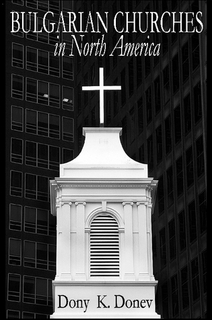2004 Prognoses about Bulgarian Churches in North America 10 Years Later
With the present rates and dynamics of immigration, the growth of Bulgarian immigrant communities across North America is inevitable. As it has experiences a great increase in the past fifteen years since the fall of the Berlin Wall, the Bulgaria immigrant community is has not only first-generation, Bulgarian-born members, but second-generation of Bulgarian Americans born in North America.
As the community and the churches within it continues to deal with the cultural dilemma, they will discover that that a new generation of immigrants will be eventually assimilated within the American culture. As North American cross-cultural dynamics in the beginning of the 21st century tend to preserve ethnic belongingness rather then assimilate it, they will perhaps present the Bulgarian American churches with an intergenerational opportunity for ministry.
Such change is a historical precedent, which demands preparation from both Bulgarian and American sides. In the past, the children of the immigrants have usually changed the ways their parents lived their lives. However, this dynamics have been reversed to a lifestyle that contains the old immigrant identity. The effect of such metamorphoses is overwhelming, since second generation immigrant must balance between the heritage of their parents and the reality of the new world in which they live.
In a religious context, the new generation is retaining or rather reinventing the old ways of worship inherited from their parents. Thus, while the secular world offers a context for assimilation, the religious community provides an atmosphere for preservation of culture. At the same time, second generation immigrants may switch to a congregation with that promotes a more American style of worship, role of women and social services. Such dynamics provide the context and reasons for church splits.
In their short modern history of the 1990s, the American Bulgarian churches have already experienced a number church splits. Some of the congregations have experienced even more than one split. Such experiences have been painful, but at the same time have brought sense to the reality of church dynamics and have sources of learning for both pastors of congregations. As the Bulgarian American churches grow in number and influence, the second generation immigrants take a more significant role in the church’s life and dynamics. In such context, programs for identity formation and church split prevention must become the focus of the church’s discipleship process.








